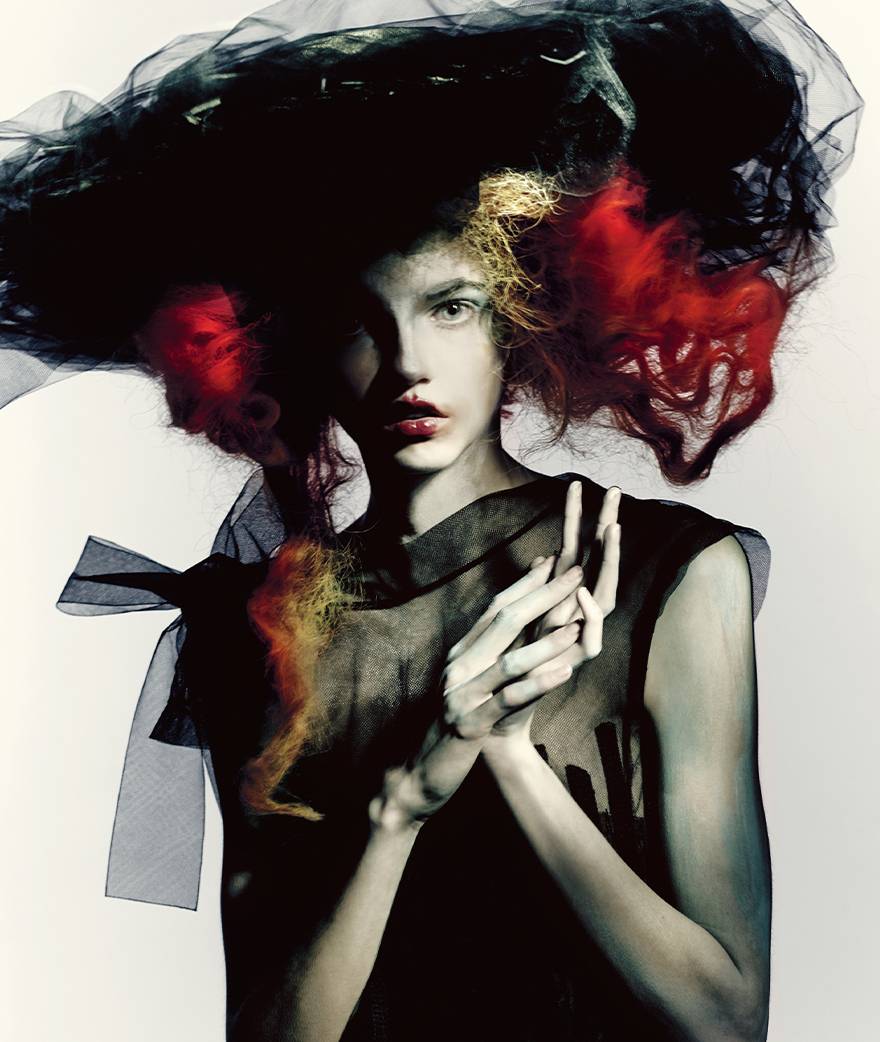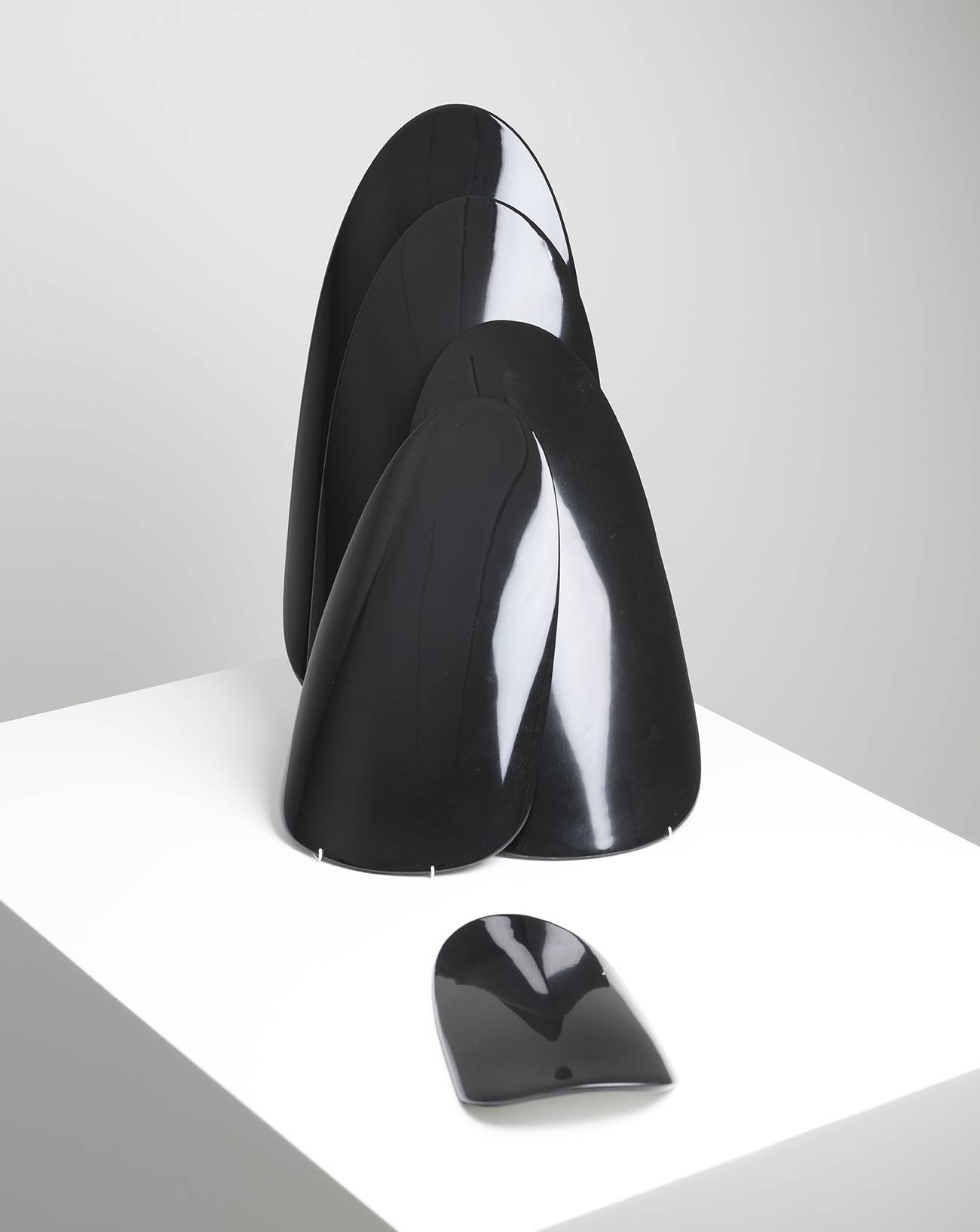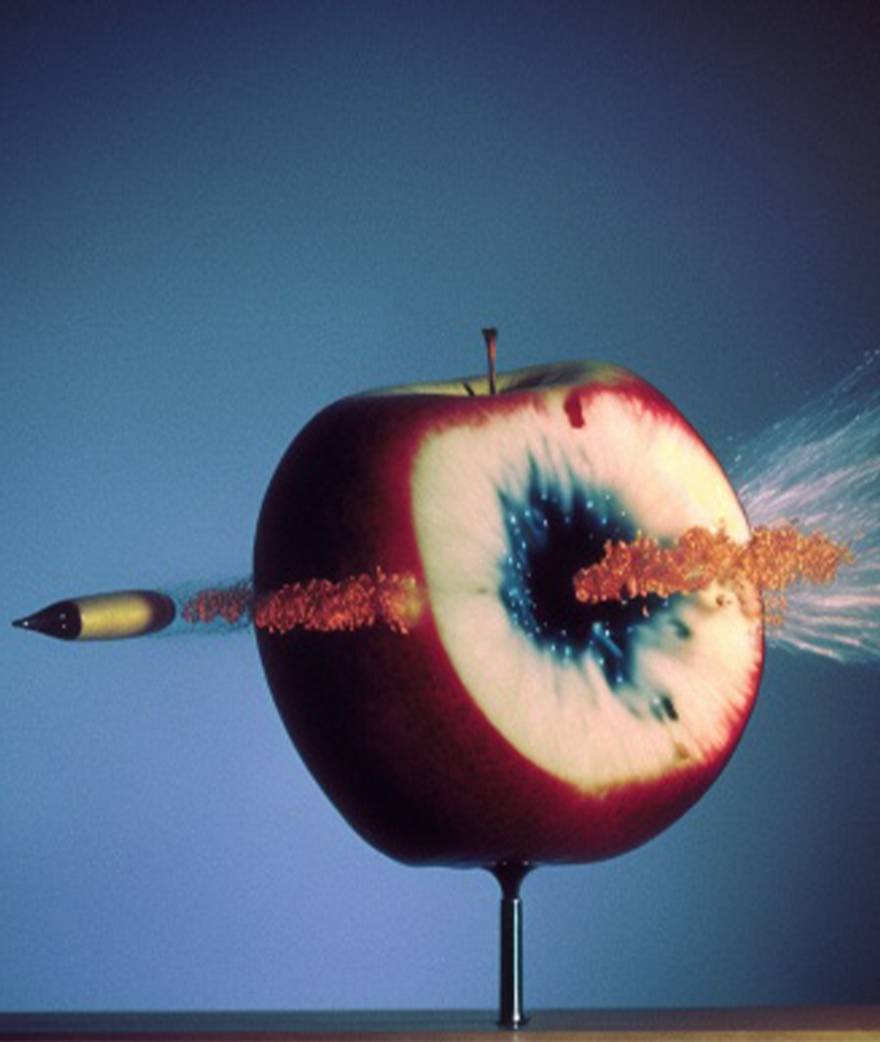

What immediately strikes the beholder of Jadé Fadojutimi’s paintings is the energy they give off. At her recent Tokyo exhibition (her first in Asia), she showed “only” four works, which nonetheless filled the entire space thanks to their colours, at once strident and pastel, and to the pictorial movement of which they bear the trace, oscillating between figuration and abstraction. Born in early-90s London, Fadojutimi studied art first at the Slade and then at the RCA. Her paintings are the result of a performative and therapeutic practice that engages not only all of her senses, but also her autobiographical experience as a female artist of Nigerian origin in 2023 London – whence her show’s title, Memory in Translation. While Joan Mitchell is a clear influence, fashion and music are just as important, as are mangas, which have often taken her to Japan. It was at her Tokyo exhibition that Numéro met up with Fadojutimi, who will soon be coming to France for a Luma Foundation residency in Arles.
Numéro: Tell us about the work you recently showed at Tokyo’s Taka Ishii Gallery.
Jadé Fadojutimi: Though they’re purely abstract landscapes, there’s a dialogue with figuration within that too. I like to think of them as being on the spectrum between abstraction and figuration. I’d like them to remain open for both myself and the viewers, who will have their own dialogue with them visually. This is when my title starts to play a role too. As well as a conversation around my interest in certain Japanese subcultures, my work has also always been about the space I find myself in and the items or objects I choose to keep in my space, whether the studio or the home, as well as photos I find myself taking every day. Because I think those small decisions we make are some- thing to question and consider. So my paintings are about noticing what the importance of the thing you’re drawn to is, whether it was the col- our or pattern of a certain item of clothing you wear all the time, or a soundtrack, for me personally, because I love soundtracks a lot. A thing that started a conversation with you internally – a conversation about, I don’t know, deep questions to do with existence, or beauty, or simply the shape of the couch in my studio and a dialogue with the plants. I like to bring them together on the canvas to reflect a moment of my own existence. And I think that, when we’re having a lot of conversations about what it means to be you in a society of cultivating diversity, at least in London, it can be hard to notice yourself. In a way, my new show is a comment on memory.
What else goes into your work?
I’m doing a lot of writing. And a lot of the drawing I’m doing is if I’m seeing shows or if I’m traveling, and also reflecting on how my past experiences as a child became interweaved with my practice. Which is why I find it important to listen to soundtracks that I loved as a kid: the music has the power to transport you back to a memory and revisit the emotions you felt that first time. In my studio, I have these large club speakers to submerge myself in soundtracks and the thought processes they engender.
What kind of music?
Japanese anime soundtracks, as well as video-game and drama soundtracks. Kevin Penkin is one, and I love Hans Zimmer too.
What’s your background?
I was born and grew up in suburban London, in a Nigerian family, but I wasn’t introduced to art through my parents. The conversation with my practice and identity started with this understanding that when I was home, I had the culture of being a Nigerian girl, but when I stepped out the door I was a British girl. It felt like this weird limbo space where when you go home different things are expected of you than when you’re outside. I always found that fascinating. And at the same time it left me feeling quite lost as a kid, questioning myself as to how I define myself, even separately to those two entities. As a kid I was always questioning things, wondering whether it’s okay not to be okay, for example. I spent a lot of time inside, and I think that’s where I found this obsession with anime, because I was drawn to the stories that were communicating, to me, a different way of translating human emotion, one I didn’t find in Western cinema. It opened up my perspective about myself.
When did you decide you wanted to be an artist?
I don’t think I ever decided I wanted to be an artist. I just loved making art. All the time. At school I took photographs, and then I started painting. I chose to study art at university because I wanted to do what I enjoyed. At the Slade, where I had to choose between painting or sculpture, I chose painting because I love colour. My way of existing is to just step into the things that fascinate me. When I was really young, I wanted to be a fashion designer. And my dream is to be a composer. So now I call myself a composer of colour.
Do you feel affinities with a particular group of artists?
I’m a lone artist. I go to the studio almost every day. I like to trap myself in my own world, maybe too much at times. My studio plays a big part in that, it’s like a collection of things I have from past and present parts. it feels like a mini installation. Once I’m in that space, I shut out the world. Because I’m such an intense painter, there aren’t many moments when I’m with others. But there are times I want to run away from the studio, which I think is important. That’s when I start contacting everyone to say, “Hey…!”
How much do you care about the spaces you exhibit in?
I do care, especially when there’s a window. In certain paintings I use Williamsburg’s interference paint: depending where you stand, especially if there’s a window, the painting changes colour. Interference paint comes in violet, red, blue and green.
Are your drawings preparatory studies for your paintings or independent works in their own right?
Most of them are independent. Some people write a diary, I guess I draw a diary – the burst of energy, thoughts, or colours that are in my mind. In the studio, I tend to fill my walls with the drawings. And rather than using a drawing directly to start and finish a painting, I might extract elements from the drawing and let them intertwine into many works.
What do you seek to make people conscious of through your work?
What I love about painting is that it’s a discussion with ourselves. When you see a work you’re drawn to, there’s always a moment where you want to leave but you can’t. I’m always curious about that bridge of conversation we’re having with the work we enjoy, because I always want to notice what it is I love about it, what it is I don’t like, and what it reminds me of. I think all those thoughts are valid. I want my canvases to be spaces where people maybe recognize themselves and think, “I see this, and that’s okay, but why do I see this? And what does that mean to me?”
Jadé Fadojutimi is represented by the galleries Gisela Capitain, www.galeriecapitain.de, Gagosian, www.gagosian.com and Taka Ishii, www.takaishiigallery.com









